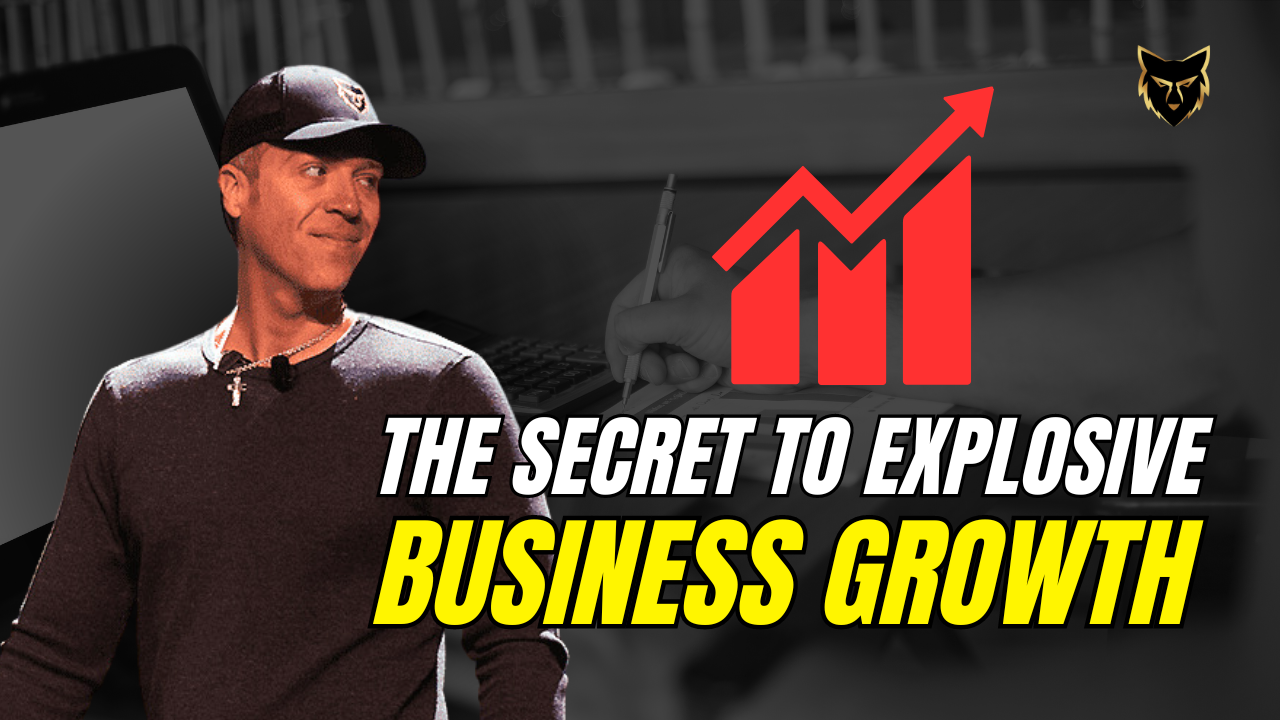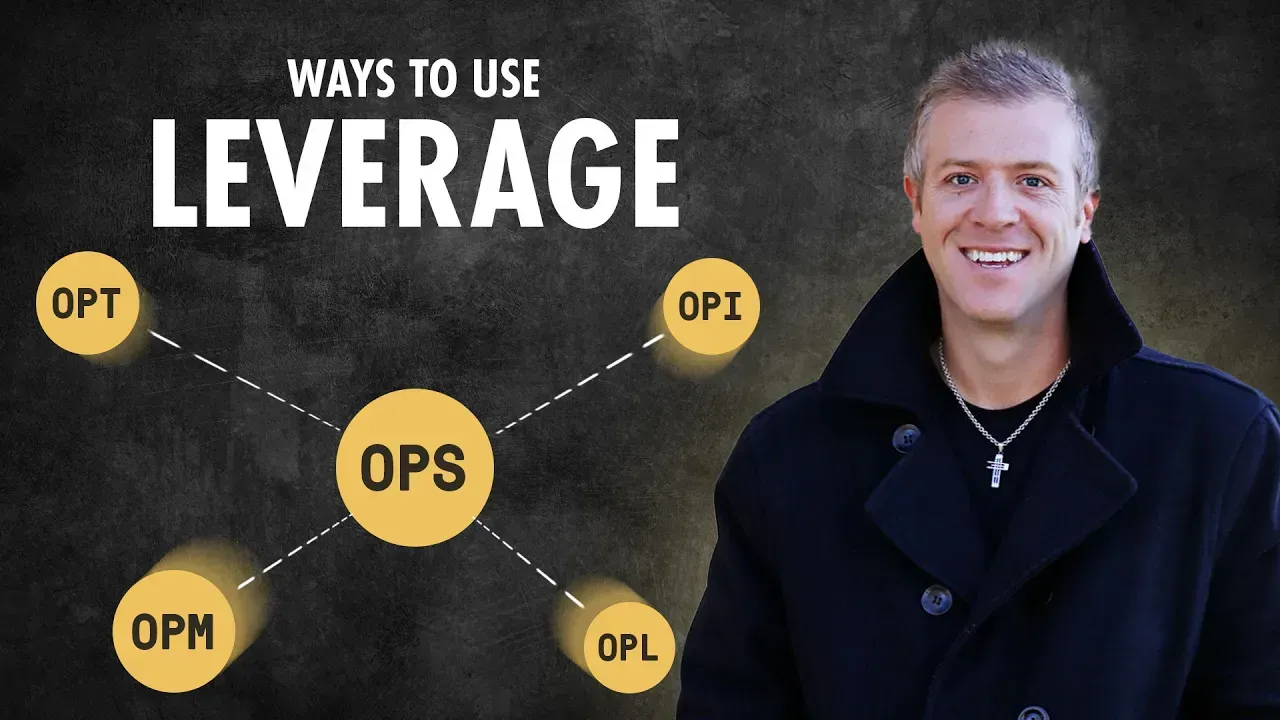How to Harness Momentum for Business Success: Proven Strategies for Growth
In today’s fast-paced business environment, momentum can be your most powerful tool. This guide will provide actionable strategies to not only build and sustain momentum but also to overcome setbacks and achieve consistent growth in your business.
Table of Contents
- Understanding Momentum in Business
- The Cycles of Business: Slumps and Plateaus
- Identifying Your Current Momentum
- Balancing Personal and Business Goals
- The Importance of Progression vs. Stagnation
- Assessing Your Current Performance
- Mindset: The Root of Winning Streaks and Slumps
- The Power of Awareness and Self-Reflection
- Setting Goals to Build Momentum
- Implementing Change: From Awareness to Action
- Long-Term Success: Planning and Implementation
- FAQ: Common Questions About Building Momentum
Understanding Momentum in Business
Momentum in business refers to the driving force that accelerates progress and results over time. Recognizing and effectively harnessing momentum can significantly impact your outcomes and set the stage for sustained success.
The Importance of Awareness
To build momentum, you first need to be aware of its presence. Whether you’re gaining or losing momentum, understanding your current state is essential. If you feel stagnant, it’s time to take action and reignite your momentum.
Creating Acceleration
When momentum is on your side, your results improve within the same timeframe, allowing you to achieve more with less effort. Focus on strategies that help you gain and maintain this momentum to maximize your business potential.
The Cycles of Business: Slumps and Plateaus
Every business experiences cycles, including slumps and plateaus. Understanding these cycles is crucial for navigating the ups and downs of your business journey.
Understanding Slumps
Slumps are a natural part of any business cycle and can result from various factors like market changes or internal challenges. The key to overcoming slumps is early identification and proactive management.
Plateaus: A Part of Growth
Plateaus, where growth seems to stall, can be frustrating but also offer opportunities for reflection and strategic adjustment. High achievers often use these periods to reassess their strategies and bounce back stronger.
Navigating the Cycles
Successfully navigating business cycles involves recognizing that challenges are part of the process. Embrace these challenges and use them as opportunities to propel your business forward.
How to Assess Your Current Momentum
Understanding your current momentum is crucial for both personal and business success. By assessing where you stand, you can determine the next steps to take for improvement.
Assessing Your Momentum
Rate yourself on a scale from 0 to 10 to identify your momentum level:
- 10: Everything is going right, and you feel unstoppable.
- 5: You’re experiencing some success but facing challenges.
- 0: You feel stuck, and nothing seems to be working.
This self-assessment helps you pinpoint areas for improvement and refocus your efforts.
Regular Self-Assessment
Make self-assessment a regular practice. Consistently ranking your momentum helps maintain awareness of your progress and highlights areas that need attention, leading to continual growth.
Balancing Personal and Business Goals
Balancing personal and business goals is essential for overall well-being and success. Understanding the interplay between these areas can guide your focus and priorities.
The Interconnectedness of Goals
Personal health directly impacts business productivity. When you’re healthy, you may prioritize financial success. However, during health challenges, your focus naturally shifts to recovery. Recognizing this interconnectedness helps in managing both areas effectively.
Creating Harmony Between Goals
To achieve balance, regularly evaluate both personal and business goals:
- Set clear, achievable goals for both areas.
- Allocate time for personal care and business tasks.
- Reflect on how personal achievements can enhance business success.
By maintaining this balance, you ensure that neither area suffers, leading to greater fulfillment and success overall.
The Difference Between Progression and Stagnation
Understanding the difference between progression and stagnation is critical for business success. Progression means actively moving forward, while stagnation indicates a lack of movement or growth.
Recognizing Your Progress
Assess your current performance compared to the past by asking:
- Are you completing more transactions than a year ago?
- Is your team expanding or shrinking?
- How many hours are you dedicating to your work now compared to before?
These reflections help determine if you’re advancing or stuck in a rut.
The Role of Self-Honesty
Brutal honesty with yourself is essential. Are your results a true reflection of your efforts? Recognizing the habits and decisions influencing your results can lead to significant insights.
Conducting a Performance Self-Assessment
To truly understand your performance, it’s crucial to conduct a self-assessment. This process allows you to pinpoint areas for improvement and recognize patterns in your work ethic.
Identifying Changes
Evaluate what has changed in your routine or strategy:
- Have you altered your marketing approach?
- Are your daily habits consistent with your goals?
- What factors may have contributed to shifts in your results?
Understanding these changes can help you regain momentum and improve your outcomes.
Mindset Matters
Your mindset plays a crucial role in your performance. Recognizing that both winning streaks and slumps originate in your thoughts empowers you to make necessary adjustments, setting the foundation for sustained progress.
Mindset: The Foundation of Success
Your mindset is a powerful force that shapes your business experiences. It can lead to winning streaks or slumps based on your thoughts and beliefs. Understanding how your mindset influences your performance is essential for success.
The Impact of Thoughts
Negative thoughts can create a cycle of poor performance. For example, worrying about failure can lead to mistakes, reinforcing negative thinking and trapping you in a losing streak.
Shifting Your Mindset
To break this cycle, shift your mindset by focusing on positive affirmations and visualizing success. This change in thinking can significantly improve your performance and help you regain momentum.
The Power of Awareness and Self-Reflection
Awareness and self-reflection are crucial for both personal and professional growth. By understanding your thoughts and behaviors, you can uncover what drives your successes and failures.
Understanding Your Patterns
Reflect on your actions and their outcomes by asking:
- What was I thinking when I succeeded?
- What thoughts contributed to my recent struggles?
This reflection can reveal valuable insights that help you make better decisions in the future.
Taking Ownership
Admit that your results, both good and bad, stem from your actions. This ownership empowers you to make necessary changes and cultivate a more positive outlook.
Setting Goals to Build Momentum
Setting clear, effective goals is essential for building momentum in your business. Goals provide direction and motivation, driving you to take action.
Identifying Areas for Improvement
Start by assessing areas where you feel stuck or dissatisfied. This awareness allows you to pinpoint specific goals that will help you move forward.
- Reflect on your current state and identify gaps.
- Consider what you want to achieve in both personal and professional life.
- Be honest with yourself about your challenges.
Creating SMART Goals
Once you’ve identified areas for improvement, create SMART goals—Specific, Measurable, Achievable, Relevant, and Time-bound. This structure ensures your goals are clear and attainable.
- Specific: Define exactly what you want to accomplish.
- Measurable: Determine how you will track progress.
- Achievable: Set realistic yet challenging goals.
- Relevant: Ensure your goals align with overall aspirations.
- Time-bound: Set deadlines to create urgency.
From Awareness to Action: Implementing Change
Awareness is the first step, but taking action is what truly drives change. It’s not enough to recognize where you are; you must also commit to moving forward.
The Importance of Decisive Action
Once you’ve set your goals, take decisive action to achieve them. Implement what you’ve learned and actively make changes in your life.
- Develop a plan outlining the steps needed to achieve your goals.
- Set milestones to track your progress.
- Stay accountable by sharing your goals with others.
Overcoming Obstacles
As you implement change, be prepared to face obstacles. Challenges are a natural part of the journey, but your mindset can help you navigate them.
- Maintain a positive outlook and focus on your goals.
- Learn from setbacks rather than letting them deter you.
- Seek support from mentors or peers when needed.
By transitioning from awareness to action, you can build the momentum necessary to achieve your goals and create the life you desire.
Planning and Implementation for Long-Term Success
Long-term success requires careful planning and execution. Start by defining what you truly want in life and writing it down. This clarity is essential for creating actionable steps toward your goals.
The Importance of Clarity
Without a clear vision, it’s easy to feel lost. Take time to reflect on your desires and establish specific objectives that will guide your actions and keep you focused.
Taking Action
Once your goals are set, consistently take action. Combining consistent action with a solid plan is key to achieving lasting success.
FAQ: Common Questions About Building Momentum
What is momentum in business?
Momentum refers to the force that drives progress and helps achieve goals more effectively. It’s essential for sustaining growth and overcoming challenges.
How can I assess my momentum?
Rate your current state on a scale from 0 to 10. This self-assessment helps identify areas for improvement and guides your next steps.
What if I feel stuck?
If you’re feeling stuck, reassess your goals and strategies. Reflect on what you truly want and make adjustments to regain momentum.
Final Thoughts
Maintaining and harnessing momentum is key to achieving long-term success in business. By being aware of your current momentum, setting clear goals, and taking decisive action, you can overcome challenges and continue progressing toward your goals.
Want to be part of the Agent Wolfpack?
Check out our full training and join our weekly sessions! Connect with a supportive community and see how we can help you hit your goals and grow your business!
Email: connorsteinbrookofficial@gmail.com
Website: www.connorsteinbrook.com
Read Also: Handle Change With the NAR Lawsuit, Crack the Code to Wealth: From Failure to Fortune , Mastering the Art of Speaking and Selling to Anyone


Connor Steinbrook, founder of the eXp Wolfpack Organization, brings over a decade of expertise in real estate, leading a global team of over 3,100 agents. His innovative approach and leadership have positioned him as one of the top influencers and strategic minds in the real estate industry.
YouTube Channel
Watch the Latest with
Connor Steinbrook
My name is Connor Steinbrook, and I created this channel to share my decade of real entrepreneurial experience, including building one of North America's largest real estate organizations, the Wolfpack Organization, through eXp Realty, to help entrepreneurs start, scale, and grow their businesses.










